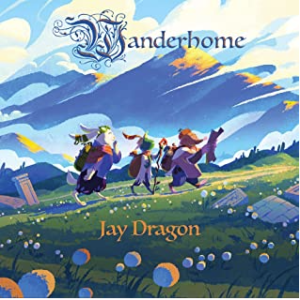It’s impossible to be involved in indie tabletop gaming circles these days and remain ignorant of Jay Dragon’s bestselling pastoral fantasy game Wanderhome, which was recently nominated for a Nebula Award. Unusually for a 100+ page tabletop roleplaying game, it has zero combat rules or stats, and almost actively discourages that kind of physical conflict. So it’s perfect for groups that want to emphasize the cozy storytelling aspects of roleplaying, almost an Animal Crossing-type antidote to all the hack and slash fighting games out there.
 The sourcebook consists primarily of Playbooks, where you choose an archetype to further flesh out into your unique character; Traits, which help you with that process of fleshing; Natures which help you build the location your characters are either currently in or shortly wandering into, and a Calendar to spark events and further story hooks. As with many sourcebooks, it can feel terrifically vague as to how the game is actually supposed to go until you get a chance to sit down and play it, preferably with people who have an idea of what they’re doing from previous experience.
The sourcebook consists primarily of Playbooks, where you choose an archetype to further flesh out into your unique character; Traits, which help you with that process of fleshing; Natures which help you build the location your characters are either currently in or shortly wandering into, and a Calendar to spark events and further story hooks. As with many sourcebooks, it can feel terrifically vague as to how the game is actually supposed to go until you get a chance to sit down and play it, preferably with people who have an idea of what they’re doing from previous experience.
And so I signed up with what I soon learned to be a table of fellow seasoned other-game Game Masters who were just as intrigued as I was with this concept, tho they each had at least a little more exposure than I had to Wanderhome. We didn’t have a guide (as the game calls its optional GMs) per se for our session — tho shout-out to Curtis for taking the most initiative! — but were all experienced enough with collaborative storytelling to attempt to share the load and build the world and adventures equally. Which, I must say, is actually pretty tiring! Building things out of whole cloth, even with the help of the sourcebook, while actively working to navigate new relationships with people over a voice-only game, is mentally draining tho ultimately worthwhile.
I was actually surprised by how large a role the Location/Natures played in helping to determine the adventure. At the start of the session, you’re meant to choose three Natures to describe your location which, with the prompts provided, help you build truly unusual and interesting places to explore. You’d think that the character creation process would feel more important, especially since the Left & Right Question mechanic not only helps build relationships between the characters but also provides additional character enrichment, but the process of building our swamp-bridge-metropolis, especially in the generous way my table made sure everyone was involved, really constructed more than one important figurative structure for our session.
It was actually a bit of a struggle to remember to use the Tokens mechanic instead of just storytelling our way through everything. My only regret is that we weren’t yet confident enough of our Wanderhome knowledge to properly incorporate the calendar into our session, which already felt like it was teeming with new ideas and inspirations for each of us as GMs to bring back to our other tables. I actually ran a game of D&D later that evening and found it both easier to do than usual but also more tiring because of the brain muscles I’d already flexed earlier that day. I think I might try another Wanderhome session with a Guide, just to see if that requires quite as much thinking. I can see, too, how this could easily be adapted to solo play.
The key thing, I think, to enjoying Wanderhome is to play with people you trust to be interested in telling a good story together with you. The playbook prompts as to what characters can do, and earn and spend tokens for, lean into a thoughtful, almost psychological form of play and relationship-building that won’t appeal to all gamers. And that’s fine. Wanderhome is meant to be niche, a retreat from the combat fantasies of many mainstream TTRPGs. Even so, it allows players to build a cozy universe based on a surprisingly rich and rewarding system that deserves all its critical acclaim.
As to the object of the book itself, it is beautifully art directed by Ruby Lavin who is credited in the back. The curated art pieces are wonderfully evocative, and come from a wide range of artists, tho hew to the pastoral anthropomorphic vibe throughout. Jay Dragon’s creation of the rules and system is excellent, tho perhaps necessarily opaque on the first go-round of reading. Like many TTRPGs, this book has to be played to be properly understood. I’m glad I got a chance to, and look forward to many more future sessions.
Wanderhome by Jay Dragon was published January 1 2021 by Possum Creek Games and is available from PossumCreekGames.com.
